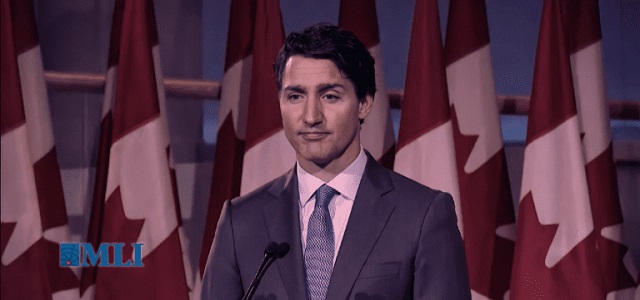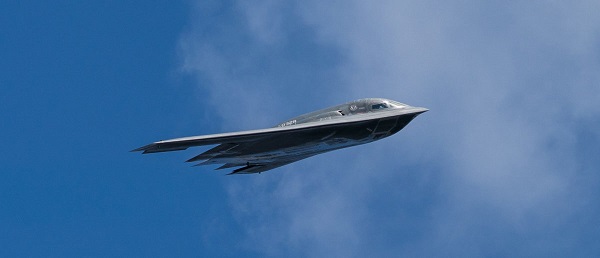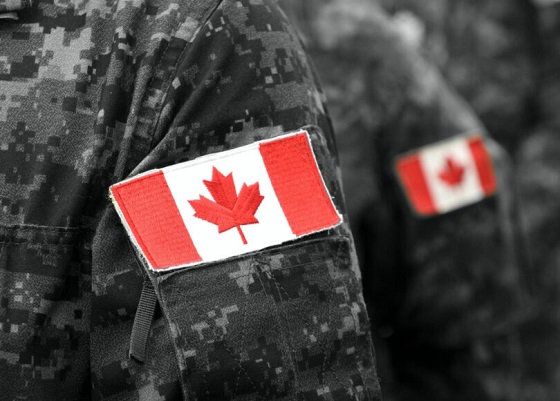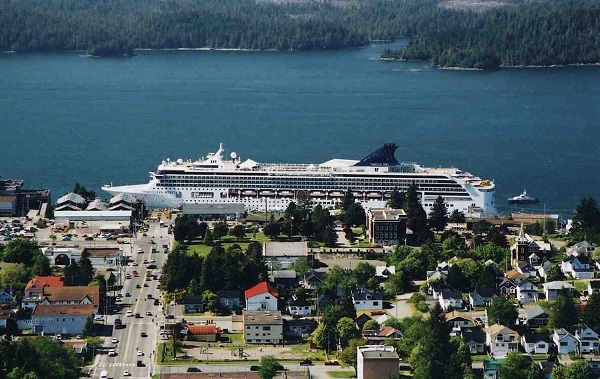armed forces
Federal government “not serious about defence,” warn Canadian military leaders

From the Macdonald Laurier Institute
J.L. Granatstein for Inside Policy
“The current prime minister of Canada is not serious about defence. Full stop. A large number of his Cabinet members are not serious about defence. Full stop.”
The Communist regime in China ramps up its aggression against Taiwan, while actively interfering in the political processes of Western democracies – including Canada. In Europe, Russia wages a brutal full-scale war against Ukraine, while sabre-rattling about nuclear strikes on our NATO allies. Meanwhile, Russian President Vladimir Putin’s Arctic ambitions threaten our sovereignty in the North.
With danger all around, one would think Canada’s federal government, led by Prime Minister Justin Trudeau, would be sounding the klaxon – rallying the country and steeling its citizens for looming conflicts with authoritarian regimes while bolstering our military for 21st-century warfare.
Alas, that seems to be far from the case, according to a pair of senior Canadian military leaders who warned recently about the federal government’s lack of commitment to and support of the military.
Over the course of four media reports that were published between May 12 and June 30, 2024, we heard the opinions of Lieutenant General (Ret’d) Andrew Leslie, and General Wayne Eyre, the Chief of Defence Staff who is retiring later this summer. Leslie, a former Liberal MP, was featured in the National Post on May 12 and again on June 30. As for Eyre, he appeared in an Ottawa Citizen article on June 20, and then in an end-of-term interview with the National Post on June 30 – just two days after the federal government announced the beginning of construction planning for the Royal Canadian Navy’s proposed fleet of fifteen destroyers.
Of these four articles, Leslie’s were by far the most important. The former Chief of Land Staff had retired from the Canadian Armed Forces to run for the federal Liberals in 2015. Elected to Parliament, he served four years – but then decided not to run for re-election. If Leslie was disillusioned, and he was, he kept silent in public until his National Post interviews. His remarks were extraordinarily blunt, but they seemingly failed to attract the public notice they deserved. Here in point form are some of his comments from his first interview:
- “The current prime minister of Canada is not serious about defence. Full stop. A large number of his Cabinet members are not serious about defence. Full stop.”
- “Our NATO allies are despairing. Our American friends are frustrated.”
- “[T]he Liberal government has no intention of meeting [the NATO standard of] two per cent (by 2030) and no intention of meeting 1.76 per cent [of GDP] (as promised in the April 2024 budget) because they rest confident in the smug knowledge that the Americans will always defend us.”
- “Since 2015, the Trudeau government has not spent, re-profiled, re-allocated, deferred, or lapsed $20 billion that was promised for defence. The impact of that is that ship fleets have not been replaced, aircraft are extraordinarily old, as are helicopters; the army is in a state of despair.”
These remarks from a former senior officer are, to my mind, devastating – much more so than those from Opposition politicians or academic experts. So too were the remarks Leslie offered on June 30:
- “According to the numbers I have 72% of the army’s vehicles and trailers are offline…. I think the big issue is, right now, the men and women in uniform don’t see any demonstrable proof that the federal government is actually seized of the issue of trying to get them the capabilities they need to better defend Canadians.”
- “The Liberal government sees defence spending as discretionary… They believe there’s a whole host of societal funding requirements, ranging from increases in healthcare, to day care, to children getting breakfast at school – and a bewildering array of boutique allocations of funds to cater to voter-sensitive initiatives. And defence comes after all of that.”
One area of special concern, Leslie maintained, was artillery shells, one of the many military items Ukraine needs in huge quantities. Canada, he stated, was falling down in producing them: “Canada has a tiny stockpile of 155-mm ammo…. One to two years prior to Russia’s latest invasion of Ukraine in 2022, a bunch of idiots decided to cancel the standing offer [with the two Canadian manufacturers of 155-mm artillery shells] because there was no business case for Canada to continue investing in the production of ammunition.”
Leslie ended the second interview by talking of those leaders he admired: “I had the privilege and honour to be in close proximity to three consecutive prime ministers who made the system work such that we bought tanks, artillery ammunition, small arms ammunition, helicopters, guns, armour-protective vehicles, new weapons systems, the list goes on. And those were Prime Minister [Jean] Chrétien, Prime Minister [Paul] Martin, and Prime Minister [Stephen] Harper.”
The general had been a member of the Trudeau government and had worked in drafting the Liberals’ defence platform in the 2015 election. But nothing had been done to implement it in a timely fashion. In Leslie’s list of prime ministers who took defence and national security seriously, Trudeau was notably absent.
The Ottawa Citizen article, by veteran defence reporter David Pugliese, was not a direct interview with General Eyre, but rather, a report on comments Eyre made behind closed doors in a speech to senior officers. Pugliese did not have a copy of Eyre’s speech but learned of it from an audience member.
According to Pugliese, Eyre, who only had a few weeks left as Chief of the Defence Staff, sounded almost optimistic about the Liberals’ 2024 budget that pledged $8 billion in new defence spending by 2030 and $73 billion more over twenty years.
Eyre reportedly told the officers, “Yeah, this policy was not as fast as we wanted it to be. And it did not give us everything we needed. But I will tell you it’s more than I expected, much more than I expected…. The prime minister told me that defence spending is only going in one direction and that is up.”
The general also reportedly spoke of creating a small team to work out an implementation plan for the new defence policy initiatives, and that he wanted some “quick hits… I see ammunition production as one of those quick hits that we absolutely have to get on with.”
In his interview with the National Post on June 20, Eyre was at times both pessimistic and positive in his assessment of the Canadian military: “[The world has entered a] pre-wartime security environment… If you’re in uniform, you learn to be pessimistic about the security situation because you’re trained for the worst case… Given the indicators and the trends that we see, I am pessimistic about the security situation…. Is this a 1938 moment? Is this a 1912 moment? The world has seen this before, with ebbs and flows, and we’re back in a multi-polar dangerous moment where the structures that have kept us generally at peace are fraying.”
If Eyre is right, Canada should be preparing for a war that is certain to affect Canada and its allies. But the Canadian procurement system for munitions and equipment is broken – a fact that Eyre freely acknowledges: “We are applying peacetime processes and peacetime mentalities to what could be considered a wartime or immediate pre-wartime security environment. So, what did we do in 1939? What did we do in 1914? We certainly didn’t take 10 or 15 or 20 years to get capabilities in place, because the war would be over by that point…. We have to deliver, and we have to deliver fast.”
The Chief of Defence Staff then spoke optimistically about Canada’s role in Latvia, where the Canadian Armed Forces leads the NATO brigade stationed there, and where the commitment is supposed to be increased in the next few years.
“We are very well respected in that part of the world,” Eyre said. “Do they want more of us? Yeah, absolutely, but for me it drives home that we produce a pretty good product…. [Canada] has and can do so much on the world stage. Compared to the majority of countries out there, we have got so much going for us.”
On June 28, 2024, Minister of National Defence Bill Blair and Angus Topshee, the Chief of the Naval Staff, announced the government’s plans to replace Canada’s Halifax-class frigates. Fifteen new destroyers would be constructed at the government’s estimate of $56 billion to $60 billion, Blair said. The Parliamentary Budget Officer earlier had estimated the construction cost at $84 billion with a “life-cycle” cost to operate and maintain the vessels at $306 billion. In reality, Blair’s announcement was not for the beginning of construction of the ships but only for a “test module.”
Some background is needed here. The Harper Conservative government in 2010 approved the National Shipbuilding Program, but it was not until 2018 that the Trudeau government, in power for three years, selected the as yet (and still) unproven British Type 26 ship as its choice. The vessels were to be constructed in Halifax at the Irving shipyards that first had to build the Arctic Offshore Patrol Ships, only completed this year (late and over-budget). Now in 2024, work at last can begin on the new destroyers.
The plan is that the first of the ships will be completed and ready for sea trials in 2033, 9 years from now and 23 years after the Harper government announced the shipbuilding program; presumably the first destroyer will not be deemed fully ready for service until at least 2034. (HMCS Halifax, the first of the frigates, went to sea in 1992, and by the time the first replacement is ready, Halifax will be 42 years old.)
But the planned completion of construction of all fifteen vessels will be glacial. Defence Minister Blair told Global TV on June 28 that the first nine ships would not be completed until 2040 and the remaining six not until 2050. In other words, it will take a quarter century for Irving to build fifteen ships – if it is able to maintain even that production schedule. The one certainty is that the ships will cost more to build – the rate of inflation for military construction is at least 6 percent higher than national inflation. The costs will be so high for these ships that it is all but certain that fewer than fifteen will ever be launched. Will any of the destroyers still be combat effective by 2050? That seems highly unlikely.
Remember what Eyre told the National Post: “We are applying peacetime processes and peacetime mentalities to what could be considered a wartime or immediate pre-wartime security environment…. We have to deliver, and we have to deliver fast.” And don’t forget Leslie’s damning comment: “The current prime minister of Canada is not serious about defence. Full stop. A large number of his cabinet members are not serious about defence. Full stop.”
At the July NATO summit in Washington, American leaders increased the heat on Trudeau to reach the 2-percent-of-GDP benchmark for military spending. “Welcomed @CanadianPM Trudeau to the U.S. Capitol today,” U.S. Senate Republican Leader Mitch McConnell wrote on X on July 9. “Shared values and close economic ties have always been the strength of the U.S.-Canada relationship. But it’s time for our northern ally to invest seriously in the hard power required to help preserve prosperity and security across NATO.”
The Trudeau government will be long gone by the time the first of the new destroyers puts to sea, and it will be completely forgotten by the time the last one sets sail. We must hope that no war intervenes in the next quarter-century because Canada certainly will not be ready – and not only with its navy. “Not serious about defence”– let’s hope we will not pay a high price for the neglect of this country’s most vital national interest.
J.L. Granatstein taught Canadian history, was Director and CEO of the Canadian War Museum, and writes on military and political history. A member of MLI’s Research Advisory Board, Granatstein’s most recent book is Canada’s Army: Waging War and Keeping the Peace. (3rd edition).
armed forces
Global Military Industrial Complex Has Never Had It So Good, New Report Finds


From the Daily Caller News Foundation
The global war business scored record revenues in 2024 amid multiple protracted proxy conflicts across the world, according to a new industry analysis released on Monday.
The top 100 arms manufacturers in the world raked in $679 billion in revenue in 2024, up 5.9% from the year prior, according to a new Stockholm International Peace Research Institute (SIPRI) study. The figure marks the highest ever revenue for manufacturers recorded by SIPRI as the group credits major conflicts for supplying the large appetite for arms around the world.
“The rise in the total arms revenues of the Top 100 in 2024 was mostly due to overall increases in the arms revenues of companies based in Europe and the United States,” SIPRI said in their report. “There were year-on-year increases in all the geographical areas covered by the ranking apart from Asia and Oceania, which saw a slight decrease, largely as a result of a notable drop in the total arms revenues of Chinese companies.”
Notably, Chinese arms manufacturers saw a large drop in reported revenues, declining 10% from 2023 to 2024, according to SIPRI. Just off China’s shores, Japan’s arms industry saw the largest single year-over-year increase in revenue of all regions measured, jumping 40% from 2023 to 2024.
American companies dominate the top of the list, which measures individual companies’ revenue, with Lockheed Martin taking the top spot with $64,650,000,000 of arms revenue in 2024, according to the report. Raytheon Technologies, Northrop Grumman and BAE Systems follow shortly after in revenue,
The Czechoslovak Group recorded the single largest jump in year-on-year revenue from 2023 to 2024, increasing its haul by 193%, according to SIPRI. The increase is largely driven by their crucial role in supplying arms and ammunition to Ukraine.
The Pentagon contracted one of the group’s subsidiaries in August to build a new ammo plant in the U.S. to replenish artillery shell stockpiles drained by U.S. aid to Ukraine.
“In 2024 the growing demand for military equipment around the world, primarily linked to rising geopolitical tensions, accelerated the increase in total Top 100 arms revenues seen in 2023,” the report reads. “More than three quarters of companies in the Top 100 (77 companies) increased their arms revenues in 2024, with 42 reporting at least double-digit percentage growth.”
armed forces
Carney’s ‘Shared Sacrifice’ Is a Lie. Only Veterans Are Bleeding for This Budget

How the 2025 Federal Budget Demands More From Those Who’ve Already Given Everything
I’ve lived the word sacrifice.
Not the political kind that comes in speeches and press releases the real kind. The kind Mark Carney wouldn’t know if it slapped him in the face. The kind that costs sleep, sanity, blood. I’ve watched friends trade comfort for duty, and I’ve watched some of them leave in body bags while the rest of us carried the weight of their absence. So when the Prime Minister stood up this year and told Canadians the new budget would “require sacrifice,” I felt that familiar tightening in the gut the one every veteran knows. You brace for impact. You hope the pain lands in a place that makes sense.
It didn’t.
Kelsi Sheren is a reader-supported publication.
To receive new posts and support my work, consider becoming a free or paid subscriber.
Six months into Mark Carney’s limp imitation of leadership, it’s painfully clear who’s actually paying the bill. The 2025 budget somehow managing to bleed the country dry while still projecting a $78-billion deficit shields the political class, funnels money toward his network of insiders, and then quietly hacks away at the one department that should be sacrosanct: Veterans Affairs Canada.
If there’s one group that’s earned the right to be spared from government-imposed scarcity, it’s the people who carried this country’s flag into danger. Veterans don’t “symbolize” sacrifice they embody it on the daily And when Ottawa tightens the belt on VAC, the consequences aren’t abstract. They’re brutal and direct, causing nothing but more death and destruction. But Mark Carney doesn’t lose sleep over veterans killing themselves.
Punishment disguised as budgeting for a veteran means the difference between keeping a roof or sleeping in a truck. Punishment disguised as budgeting means PTSD left untreated until it turns a human being into another suicide statistic. Punishment disguised as budgeting means a veteran choosing between groceries and medication because some number-shuffler in Ottawa wants to pretend they’re being “responsible.”
This isn’t fiscal restraint it’s political betrayal wrapped in government stationery. Ottawa sells it as hard choices, but the hardness always falls on the backs of the same people: the ones who already paid more than their share, the ones who can’t afford another hit. Carney and his cabinet won’t feel a thing. Not one missed meal. Not one sleepless night. Not one flashback.
But the men and women who already paid in flesh? They’re the ones being told to give more.
That’s not sacrifice.
That’s abandonment dressed up as fiscal policy.
And Canadians need to recognize it for what it is a government that demands loyalty while refusing to give any in return. The fine print in the government’s own documents reveals what the slogans won’t.
Over the next two years, VAC plans to cut $2.227 billion from its “Benefits, Services and Support” programs. [2] Broader “savings initiatives” reach $4.4 billion over four years, much of it through reductions to the medical-cannabis program that thousands of veterans rely on to manage chronic pain and PTSD. [3] Independent analysts estimate yearly losses of roughly $900 million once the cuts are fully implemented. [4]
To put that in perspective: no other department is seeing reductions on this scale. Not Defence, not Infrastructure, not the Prime Minister’s Office thats for damn sure. Only the people who’ve already paid their debt to this country are being asked to give again.
The government’s line is tidy: “We’re not cutting services we’re modernizing. Artificial Intelligence will streamline processing and improve efficiency.”
That sounds fine until you read the departmental notes. The “modernization” translates into fewer human case managers, longer waits, and narrower eligibility. It’s austerity dressed up as innovation. I’ve coached veterans through the system. They don’t need algorithms; they need advocates who understand trauma, identity loss, and the grind of reintegration. They need empathy, not automation.
This isn’t abstract accounting. Behind every dollar is a life on the edge, the human cost and toll is very real.
- Homelessness: Veterans make up a disproportionate number of Canada’s homeless population. Cutting benefits only deepens that crisis.
- Mental Health: Parliament’s ongoing study on veteran suicide shows rising rates of despair linked to delays and denials in VAC services. [5] Knowing MAID for mental illness alone in 2027 will take out a significant amount of us.
- Food Insecurity: A 2024 VAC survey found nearly one in four veterans reported struggling to afford basic groceries. That’s before these cuts.
We talk about “service” like it ends with deployment. It doesn’t. Service continues in how a nation cares for those who carried its battles, and this doesn’t include the cannabis cut to medication or the fight’s we have to fight when they tell us our injuries are “not service related”
The insult is magnified by the timing. These cuts were announced just days before November 11 Remembrance Day, when Canadians bow their heads and say, “We will remember them.”
Apparently, the government remembered to draft the talking points but forgot the meaning behind them, not a single one of the liberal government should have been allowed to show their faces to veteran’s or at a ceremony. They’re nothing but liars, grifters and traitors to this nation. Yes I’m talking about Jill McKnight and Mark Carney.
The budget still runs the second-largest deficit in Canadian history. [6]
Veteran cuts don’t fix that. They barely dent it. What they do is let the government say it’s “finding efficiencies” while avoiding the real structural overspending that created the problem in the first place. When a government chooses to protect its pet projects and insider contracts while pulling support from veterans, that’s not fiscal discipline it’s moral cowardice. The worst part is that This isn’t an isolated move. It fits a six-month pattern: large, attention-grabbing announcements about “reform,” followed by fine print that concentrates power and shifts burden downward. Veterans just happen to be the first visible casualty.
The same budget expands spending in other politically convenient areas green-transition subsidies, digital-governance infrastructure, and administration while the people who once embodied service are told to tighten their belts.
As a combat veteran, I know what it’s like to come home and realize that the fight didn’t end overseas it just changed terrain. We fought for freedom abroad only to watch bureaucratic neglect wage a quieter war here at home. Veterans don’t ask for privilege. They ask for respect, for competence, for follow-through on the promises this country made when it sent them into harm’s way.
Here’s what really needs to change, the liberal government has to go, thats step one. Restore VAC funding immediately. Any “savings” plan that touches benefits, services, or support should be scrapped. End the AI façade. Efficiency can’t replace empathy. Keep human case workers who understand the veteran experience. Audit and transparency. Publish a detailed breakdown of where VAC funds are cut and who approved it. Canadians deserve to see the receipts. National accountability. Every MP who voted for this budget should face veterans in their constituency and explain it, face-to-face.
Budgets are moral documents. They show what a country values. By slashing VAC while running record deficits, this government declared that veterans are expendable line items, not national obligations. The Prime Minister promised “shared sacrifice.” But the only people truly sacrificing are the ones who already gave more than most Canadians ever will.
Sacrifice isn’t about spreadsheets; it’s about service. It’s what every veteran understood when they raised their right hand. This government’s brand of sacrifice asking wounded soldiers to pay for political mismanagement isn’t austerity. It’s abandonment.
Canada owes its veterans more than a wreath once a year. It owes them respect written into every budget, not erased from it.
KELSI SHEREN
Footnotes
[1] The Guardian, “Canada’s 2025 Federal Budget Adds Tens of Billions to Deficit as Carney Spends to Dampen Tariffs Effect,” Nov 5 2025.
[2] True North Wire, “Liberal Budget to Cut $4.23 Billion from Veterans Affairs,” Nov 2025.
[3] StratCann, “Budget 2025 Includes Goal of Saving $4.4 Billion in Medical Cannabis Benefits,” Nov 2025.
[4] Canadian Centre for Policy Alternatives, “Where Will the Federal Government Cut to Pay for Military Spending and Tax Cuts?” Nov 2025.
[5] House of Commons Standing Committee on Veterans Affairs, “Study on Veteran Suicide and Sanctuary Trauma,” ongoing 2025.
[6] CBC News, “Federal Budget 2025 Deficit Second Largest in Canadian History,” Nov 2025.
Kelsi Sheren is a reader-supported publication.
To receive new posts and support my work, consider becoming a free or paid subscriber.
-

 Alberta1 day ago
Alberta1 day agoThe Recall Trap: 21 Alberta MLA’s face recall petitions
-

 International1 day ago
International1 day agoTyler Robinson shows no remorse in first court appearance for Kirk assassination
-

 Business2 days ago
Business2 days agoHigh-speed rail between Toronto and Quebec City a costly boondoggle for Canadian taxpayers
-

 Energy1 day ago
Energy1 day agoCanada’s future prosperity runs through the northwest coast
-

 illegal immigration1 day ago
illegal immigration1 day agoUS Notes 2.5 million illegals out and counting
-

 Business2 days ago
Business2 days agoThe world is no longer buying a transition to “something else” without defining what that is
-

 2025 Federal Election2 days ago
2025 Federal Election2 days agoToo Close for Comfort: Carney Floor Crosser Comes From a Riding Tainted by PRC Interference
-

 Daily Caller19 hours ago
Daily Caller19 hours ago‘There Will Be Very Serious Retaliation’: Two American Servicemen, Interpreter Killed In Syrian Attack










